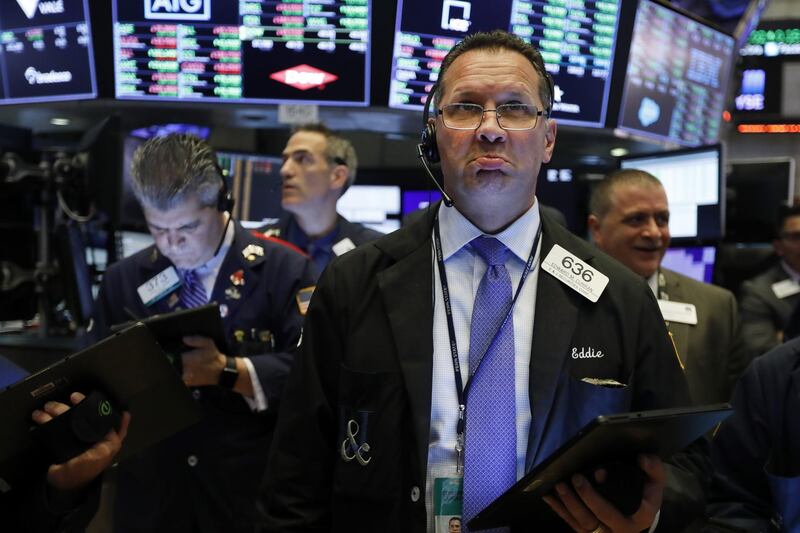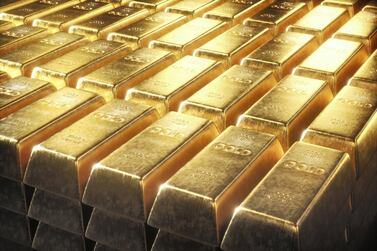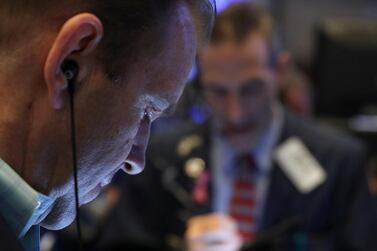Just as the S&P 500 was setting a record high on Thursday, bond yields were tumbling to their lowest levels since Donald Trump was elected. The yield on the 10-year Treasury, which influences rates for mortgages and other loans, dropped below 2 per cent at one point. It was above 3.2 per cent in November.
Usually, stock prices rise when investors are feeling confident. Bond yields, meanwhile, often fall when investors are worried about a softening economy. How can both be happening at the same time? In large part, it's because investors are locking in bets based on expectations for what the Federal Reserve will do with interest rates. The US-China trade war is also playing a role. Here's a look at how ebullience and trepidation can occur simultaneously:
How is the Fed pushing the stock market higher?
Most investors expect the Fed to cut interest rates at its next meeting in July for the first time since the economy was swamped under the Great Recession in 2008. Not only that, many investors expect the central bank to cut rates another one or maybe even two times later this year. It's a sharp turnaround from December 2018, when the Fed raised rates for the seventh time in two years.
For stocks, lower rates can goose prices higher because stocks suddenly look more attractive than bonds. Lower rates also can encourage borrowing and more economic activity.
"Markets have accepted the new world order where low interest rates are viewed as a huge positive and people buy into the fact that you can afford to pay higher valuations" for stocks, says Nate Thooft, senior portfolio manager at Manulife Asset Management.
It's also not just the Fed. Central banks around the world have shown their willingness to keep interest rates low to invigorate their economies.
Why are Treasury yields falling?
Short-term yields tend to fall when expectations build for coming rate cuts. Longer-term yields, meanwhile, fall when expectations for inflation are low and worries about the economy are growing.
Inflation has remained remarkably tame. Some concerning economic figures, meanwhile, have been popping up around the world. Particularly in manufacturing, countries have seen slowing momentum as the global trade war weighs on trade and business confidence.
"The bond market has reacted more powerfully than the equity markets over the last several months, both in anticipation of Fed news and when it comes to global growth worries," says Mr Thooft.
The bond market is usually seen as the more sober one when it comes to assessing economic trends, rather than the stock market, but Mr Thooft says the movement in bond yields may have been overdone.
Is the trade war also moving markets?
Yes. Optimism is rising that the world's largest economies can make progress on their trade dispute when the US and Chinese leaders meet at the Group of 20 summit this week. Mr Trump's tweet announcing the meeting earlier this week helped send the S&P 500 to one of its better days of the year, up 1 per cent.
If Mr Trump and Chinese President Xi Jinping make so much progress that a deal seems near, Fed policymakers may not cut rates, or at least not in July. But few economists expect much progress will be made. Most analysts say that the most likely outcome is that the two sides agree to schedule talks. It's not clear whether Mr Trump will suspend his threat to slap more tariffs on the remaining $300 billion (Dh1.1tn) in Chinese imports that haven't yet been taxed.
Even if the Trump-Xi meeting goes well, the effects of Mr Trump's trade fights with Europe and Mexico, as well as China, will likely linger. US farmers have been hurt by retaliatory tariffs imposed on agricultural exports and US business investment has slowed, as companies delay planned expansions amid greater uncertainty.
Trade fights "don't unwind rapidly," says Diane Swonk, chief economist at Grant Thornton.
There are signs that the US economy is stumbling, and that low inflation is more stubborn than the Fed previously thought, both of which argue for lower rates.
"They're getting the cuts," says Joe Brusuelas, chief economist at tax advisory firm RSM, referring to stock market investors who bid up shares on anticipation of the Fed slicing rates. "The US domestic economy is decelerating at an accelerating pace."
Is the US economy doing well?
Yes, for now. Few economists are forecasting a recession.
But Mr Brusuelas and other analysts expect growth could come in as low as 1.8 per cent this year, sharply below last year's 2.9 per cent. The boost to consumer spending from the tax cuts is fading, Mr Brusuelas says. And while the unemployment rate remains low, hiring is on track to fall to its slowest pace since 2010.
Inflation has remained below the Fed's 2 per cent target, which chairman Jerome Powell said as recently as April was likely a temporary issue stemming from cheaper gas and other factors. But on Wednesday, Fed policymakers forecast that inflation would be just 1.5 per cent at the end of this year. While lower inflation might sound good, it suggests that wages won't rise by enough to push prices higher.
What if the Fed does not cut rates at all?
The expectation for rate cuts is so deeply entrenched in markets that most investors don't consider this a likely scenario.
Brian Jacobsen, senior investment strategist at the multi-asset solutions team at Wells Fargo Asset Management, is outside the mainstream in saying that the Fed might stand pat. He says China's slowing economy adds urgency for its leaders to reach a deal, while Trump has seen how much the stock market wants a trade agreement.
If next week's meeting does offer some resolution, expectations for a rate cut will be dashed. But any disappointment could be offset by expectations for more durable economic growth around the world. "Once again, we could be in a position where bond yields rise and stocks rise as well," Mr Jacobsen says. "We'll no longer have this divergence."








